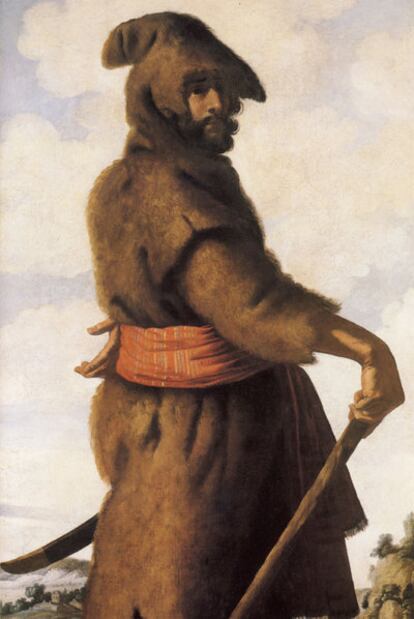Saving the bishop of Durham's Zurbaráns
Magnate who stopped 'Sons of Jacob' sale wants paintings to grace a new museum
It only happens in fairy tales. The arrival of an emissary, a savior, at the last moment, to save the stars of the show. In this case the stars are 12 canvases by the Spanish artist Francisco Zurbarán (1598-1664): the series The Sons of Jacob, painted around 1640. The danger that hung over them was a public auction to sell them to the highest bidder, thus despoiling Auckland Castle, residence of the Anglican bishop of Durham in northeast England, of the treasure it has held since the 18th century. The savior is Jonathan Ruffer, the man who has written an 18-million-euro check to the Church of England to prevent the auction, with the aim of making The Sons of Jacob the nucleus of a new museum.
Ruffer's check, initially given to a trust that will oversee the implementation of the agreement, will also serve to revitalize the zone, turning Auckland Castle into a cultural tourist attraction. "The castle is a world-class building, with architectural styles that run from the year 1100 to 1800. Until 1830 the bishops were prince-bishops, and Auckland was the seat of the most powerful domain between Scotland and England. My hope is that it can be an artistic center, exhibiting pictures on loan from the National Gallery, as well as the Zurbaráns," says the multi-millionaire in an email.
Ruffer, 59, owner of a high-risk investment firm, and well known in the City of London for his flair, was brought up in the Yorkshire town of Stokesley, and wants to restore to the neglected North of England something of its former splendor by way of tourism. He is also a collector of 17th-century religious art who savors the story surrounding these canvases. How they came to England is unclear. Some suggest they may have been robbed by pirates from a ship bound for America. They were acquired in 1756 by the then bishop of Durham, Robert Trevor, who paid 124 pounds for the 12 pictures (the 13th was lost and substituted by a copy), the property of a rich Jewish merchant. Trevor was an advocate of the Jewish cause who applauded new legislation (the Jewish Emancipation Bill) that gave full citizenship to Hebrews; but riots forced the withdrawal of the bill. Trevor hung the pictures in the great hall of his residence.
"The paintings are a powerful symbol of unity," says Ruffer, who has other more private reasons for his move. His wife, Dr Jane Sequeira, is a descendant of Isaac Henriques Sequeira, "a Sephardic Jew from Portugal [...] whose portrait by Gainsborough is on show in the Prado," says the magnate.

Tu suscripción se está usando en otro dispositivo
¿Quieres añadir otro usuario a tu suscripción?
Si continúas leyendo en este dispositivo, no se podrá leer en el otro.
FlechaTu suscripción se está usando en otro dispositivo y solo puedes acceder a EL PAÍS desde un dispositivo a la vez.
Si quieres compartir tu cuenta, cambia tu suscripción a la modalidad Premium, así podrás añadir otro usuario. Cada uno accederá con su propia cuenta de email, lo que os permitirá personalizar vuestra experiencia en EL PAÍS.
¿Tienes una suscripción de empresa? Accede aquí para contratar más cuentas.
En el caso de no saber quién está usando tu cuenta, te recomendamos cambiar tu contraseña aquí.
Si decides continuar compartiendo tu cuenta, este mensaje se mostrará en tu dispositivo y en el de la otra persona que está usando tu cuenta de forma indefinida, afectando a tu experiencia de lectura. Puedes consultar aquí los términos y condiciones de la suscripción digital.
Últimas noticias
The complicated life of Francesca Albanese: A rising figure in Italy but barred from every bank by Trump’s sanctions
Half of Scotland is in the hands of 420 property owners
How Japan is trying to avert ‘digital defeat’
From digital curfews to blocking apps: How technology experts protect their children online
Most viewed
- Why we lost the habit of sleeping in two segments and how that changed our sense of time
- Trump’s obsession with putting his name on everything is unprecedented in the United States
- Pablo Escobar’s hippos: A serious environmental problem, 40 years on
- The Florida Keys tourist paradise is besieged by immigration agents: ‘We’ve never seen anything like this’
- Charles Dubouloz, mountaineering star, retires at 36 with a farewell tour inspired by Walter Bonatti








































